The Stone Age Chapter Notes | Social Studies Class 5 ICSE PDF Download
| Table of contents |

|
| Introduction |

|
| The Stone Age and Its Periods |

|
| The Bronze Age (2,000 BC – 1,200 BC) |

|
| Points To Remember |

|
| Glossary |

|
Introduction
The Stone Age is an important time in history when early humans used stones to make tools and weapons. It is the first part of pre-history, before writing was invented. This period is divided into different stages, showing how humans lived, made tools, and slowly learned new things like farming and using metals. The chapter also talks about the Bronze Age, which came after the Stone Age, when humans started using bronze for stronger tools.
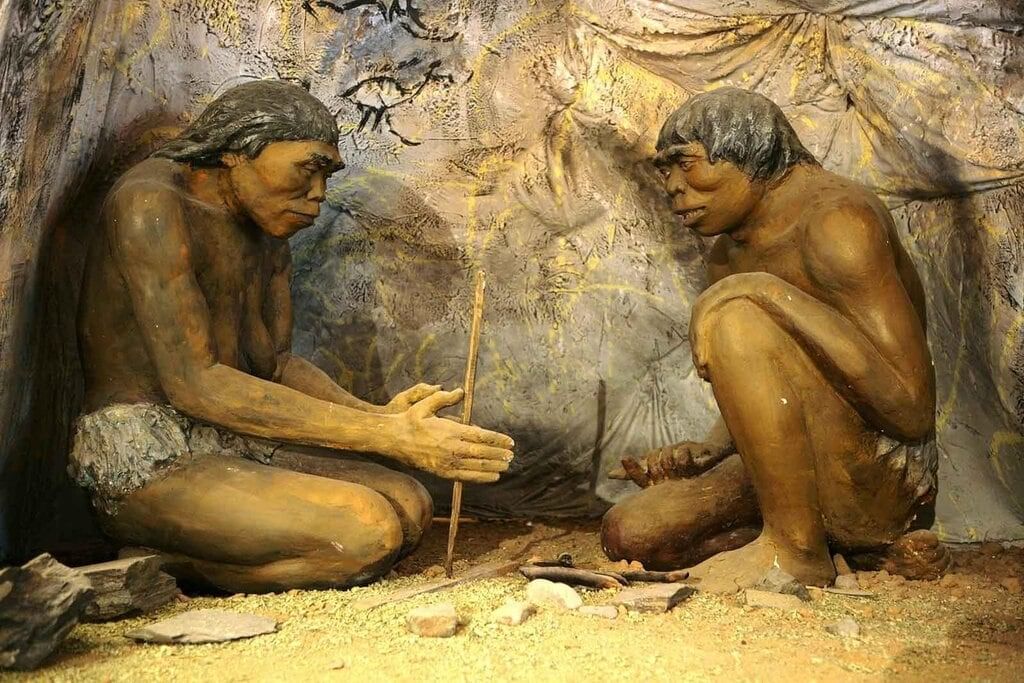
The Stone Age and Its Periods
- The Stone Age is the time when early humans made tools and weapons from stones.
- It is divided into four periods:
- Palaeolithic or Old Stone Age
- Mesolithic or Middle Stone Age
- Neolithic or New Stone Age
- Chalcolithic or Copper-Stone Age
Palaeolithic Age (2,000,000 BC – 10,000 BC)
The word Palaeolithic comes from Greek words "palaeo" (old) and "lithos" (stone), so it is called the Old Stone Age.
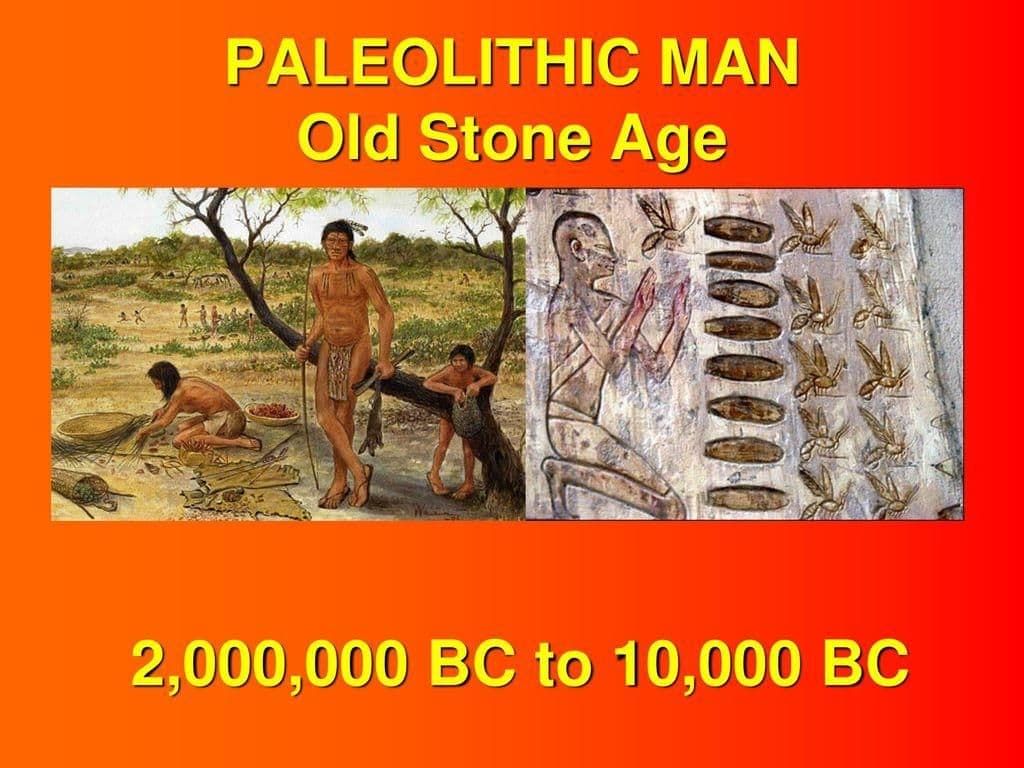 Life
Life
- People lived a nomadic life, moving around to find food and water.
- They hunted wild animals and gathered fruits, nuts, roots, and eggs for food.
- They had no idea about growing crops or keeping animals for food.
- They lived in small groups to help each other hunt big animals.
- They covered their bodies with leaves, bark, and animal skins.
- They lived in caves, rock shelters, or on trees to stay safe from wild animals.
Tools
- They used rough stone tools to cut meat, chop fruits, dig roots, and chop wood.
- Some tools might have been used as weapons like arrowheads for hunting.
Sites
- Signs of hunter-gatherers from this period are found in places like Bhimbetka, Kurnool in Andhra Pradesh, and Hunsgi in Karnataka.
Discovery of Fire
- During bad weather with lightning and thunder, bushes and trees caught fire.
- Early humans likely found that rubbing two stones together made sparks of fire.
- These sparks burned leaves, and they learned to use fire for cooking meat and keeping wild animals away.
- Fire helped humans grow and develop further.
Fun Fact
- Traces of ostrich egg shells were found at Patne in Maharashtra, showing ostriches lived in India during this time.
- Traces of ash were found in Kurnool caves in Andhra Pradesh, showing people knew how to use fire.
Mesolithic Age (10,000 BC – 8,000 BC)
The word Mesolithic comes from Greek words "meso" (middle) and "lithos" (stone), so it is called the Middle Stone Age.
Life
- This was a time of change between the Palaeolithic and Neolithic Ages.
- Due to climate changes, there was less food in small areas, so people stayed in one place longer.
- People started living in caves and rock shelters for longer periods.
- They began thinking about a settled life during this time.
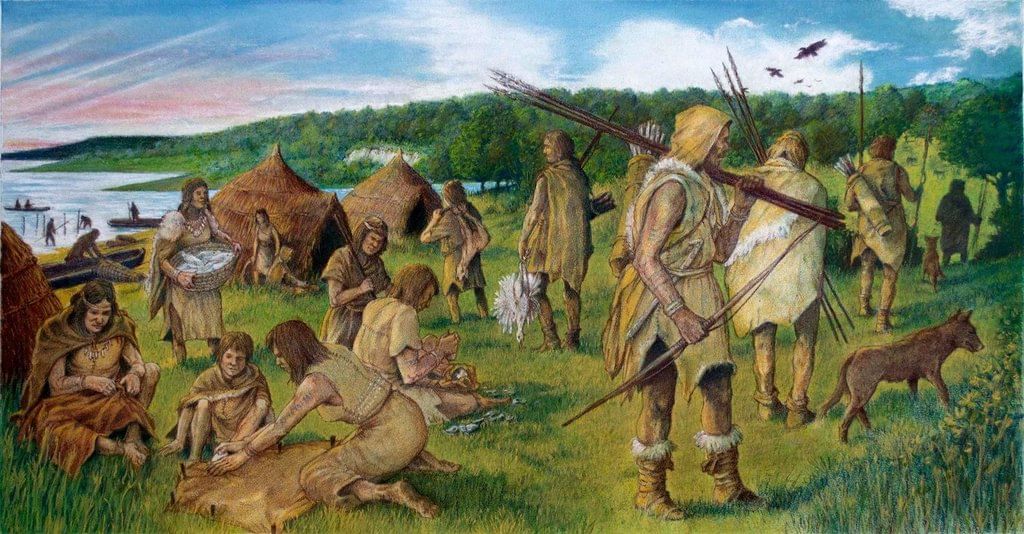
Tools
- They started making better tools called microliths, which were small stone tools.
- They fixed these small stones onto handles of bone or wood to make tools like spears, arrows, and saws.
- Older types of tools were still used during this period.
Sites
- Important Mesolithic sites are found at Bhimbetka and Pachmarhi in Madhya Pradesh, Bagor in Rajasthan, and Damdama in Uttar Pradesh.
Neolithic Age (8,000 BC – 4,000 BC)
The word Neolithic comes from Greek words "neo" (new) and "lithos" (stone), so it is called the New Stone Age.
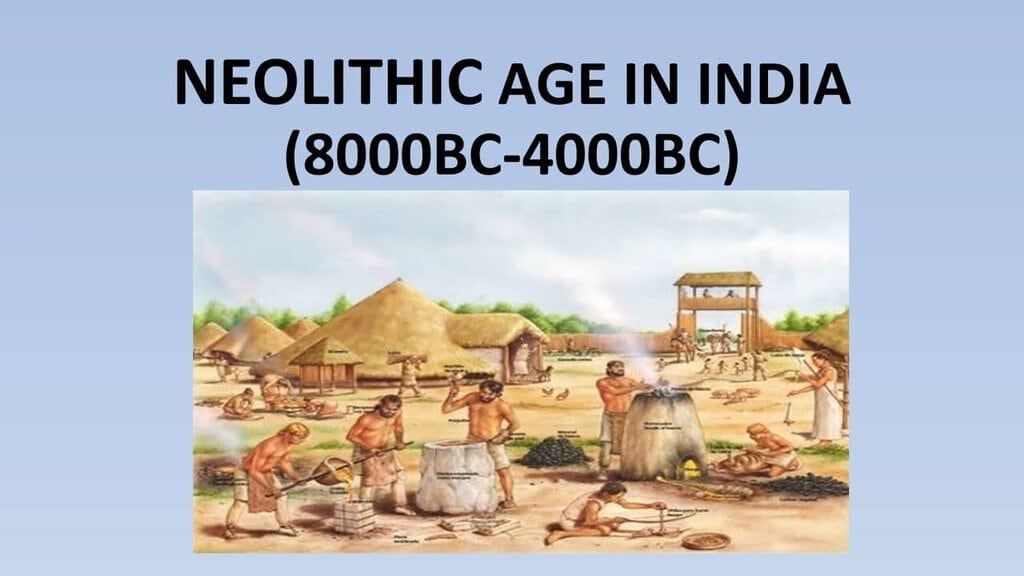 Life
Life
- People became farmers and herders, moving away from being hunter-gatherers.
- They learned to grow crops by watching how plants grew from seeds.
- They kept animals like sheep and goats for meat and milk.
- Early crops grown were wheat and barley.
- They no longer needed to move around for food, which led to settled villages where many people lived together.
- They started making pots to store food and cook.
- They began weaving cloth using materials like cotton.
- They buried their dead with objects, showing a belief in life after death.
- In places like Burzahom, pit-houses were found, used as homes or for shelter in cold weather.
Tools
- Neolithic tools were well-shaped and polished for better cutting edges.
- They were made of stone, wood, and bone, used for grinding grains and other tasks.
- Tools from the Palaeolithic and Mesolithic Ages were still used at the same time.
Sites
- Neolithic sites are found at Mehrgarh in Pakistan, Burzahom in Kashmir, Koldihwa in Uttar Pradesh, and Chirand in Bihar.
- Signs of grains and bones of domesticated animals were found at these places.
Fun Fact
- The earliest signs of growing barley and wheat, and keeping sheep and goats in the Indian subcontinent, were found at Mehrgarh, in present-day Pakistan.
- The first animal tamed by early humans was the wild ancestor of the dog.
Chalcolithic Age (4,000 BC – 2,000 BC)
This period is called the Chalcolithic Age or Copper-Stone Age because people used copper and stone together for tools and weapons.
Life
- People depended on farming, raising animals, hunting, and fishing for food.
- There was a lot of use of copper along with stone for making tools and weapons.
- Many objects for daily use were made of copper.
Tools
- Common tools made of copper were swords, knives, axes, fishing hooks, chisels, pins, and rods.
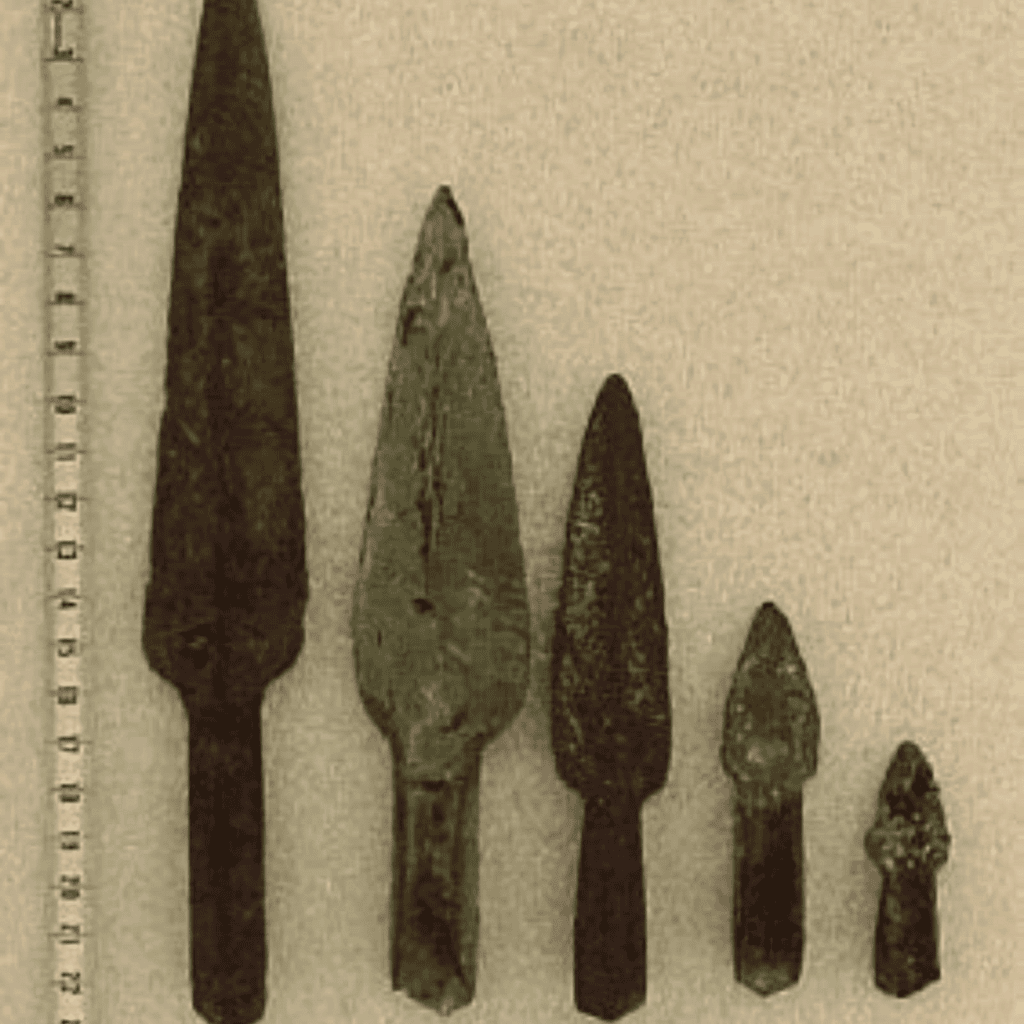 Sites
Sites
- Copper tools and objects have been found at sites like Brahmagiri in Karnataka, Kurnool in Andhra Pradesh, and Navdatoli in Madhya Pradesh.
The Bronze Age (2,000 BC – 1,200 BC)
- In the Bronze Age, humans learned to mix tin with copper to make bronze.
- Bronze tools and weapons were stronger than those made of copper or stone.
- Many objects and tools for daily use were made of bronze.
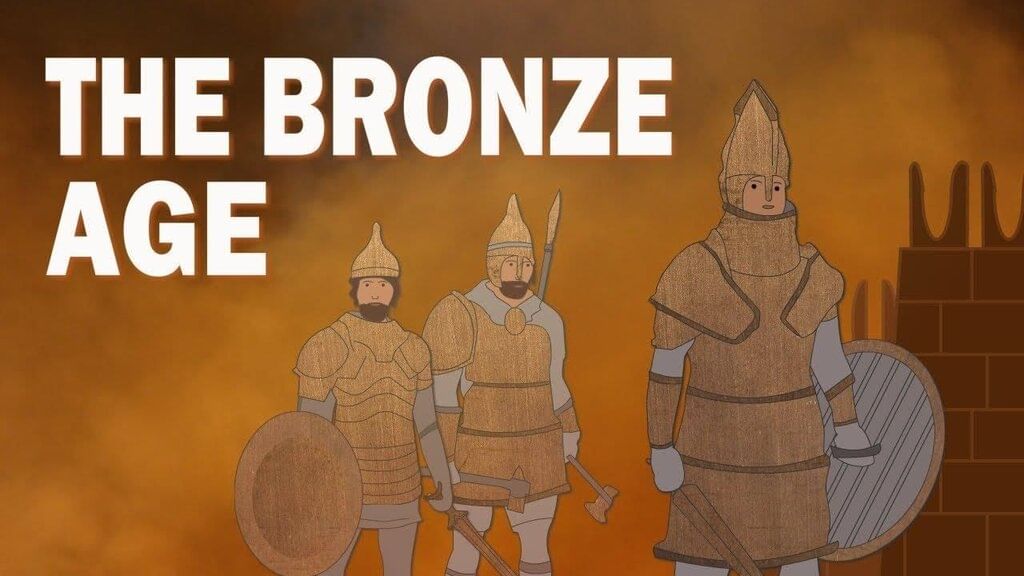
Points To Remember
- Historians divide pre-history into three main periods: Stone Age, Bronze Age, and Iron Age.
- The Stone Age is when stones were used to make tools and weapons.
- The Stone Age has four parts: Palaeolithic, Mesolithic, Neolithic, and Chalcolithic Ages.
- The Palaeolithic Age was a time of hunting and gathering.
- The Mesolithic Age was a time of change between the Palaeolithic and Neolithic Ages.
- The Neolithic Age was when people started farming and keeping animals.
- The invention of the wheel in the Neolithic Age was a big achievement for humans.
Glossary
- Nomadic: A lifestyle where people move from place to place with no fixed home.
- Rearing: Taking care of young animals until they can look after themselves.
- Civilisation: The society, culture, and way of life in a particular area.
- Domestication: The process of taming an animal and keeping it as a pet or on a farm.
- Farming: Growing crops on a piece of land.
- Herding: Bringing individual animals together into a group and taking care of them.
- Weaving: A method of making fabric by crossing two sets of threads at right angles.
- Pit-house: A house that is partly below the ground, often of cultural or historical interest.
|
88 docs|20 tests
|
FAQs on The Stone Age Chapter Notes - Social Studies Class 5 ICSE
| 1. What are the main characteristics of the Stone Age? |  |
| 2. What significant developments occurred during the Chalcolithic Age? |  |
| 3. How did the Bronze Age differ from the Stone and Chalcolithic Ages? |  |
| 4. What are some key terms related to these prehistoric ages that students should remember? |  |
| 5. Can you share some fun facts about the Stone Age, Chalcolithic Age, and Bronze Age? |  |




















